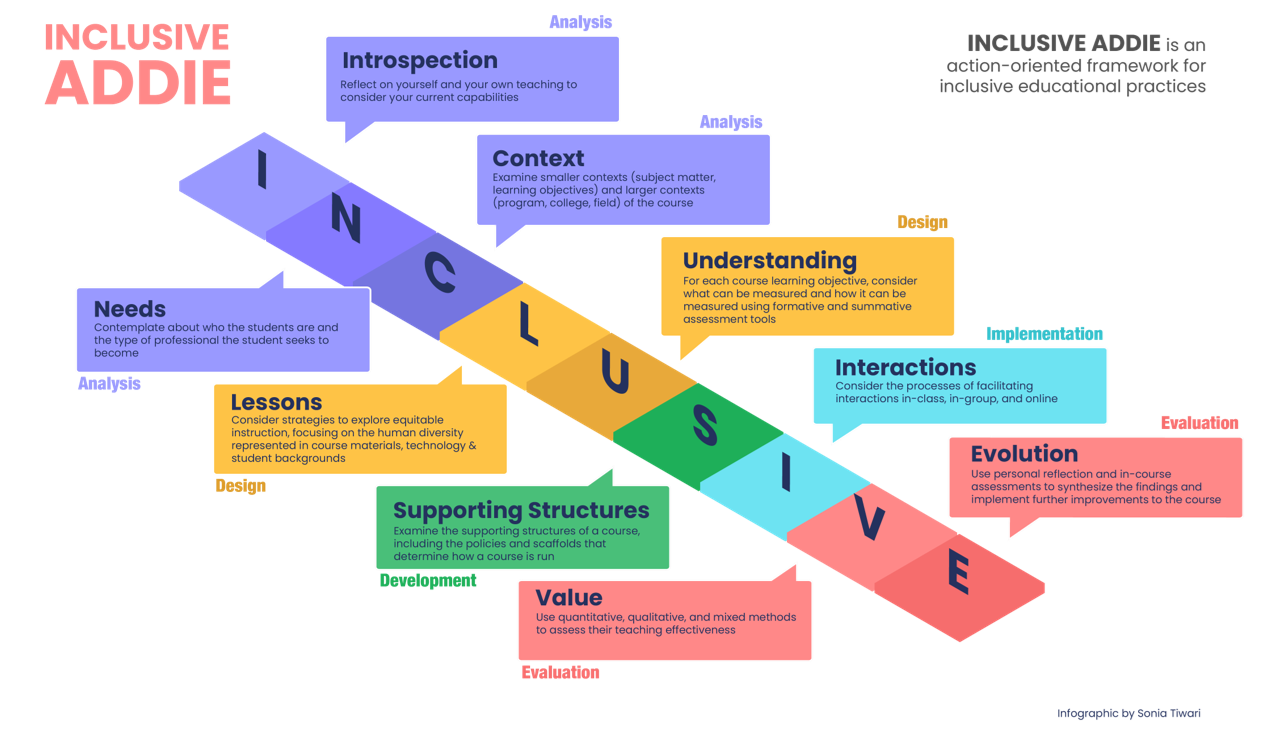Bandura’s Self-Efficacy Theory Of Motivation
- Albert Bandura
The INCLUSIVE ADDIE framework is a cyclical instructional design model incorporating inclusive design principles. It is designed to help trainers create training that is accessible to all learners, regardless of their abilities, cultural backgrounds, or learning styles.
 The INCLUSIVE ADDIE framework consists of eight steps:
The INCLUSIVE ADDIE framework consists of eight steps:

How to Use the INCLUSIVE ADDIE Framework for Experiential Learning
The INCLUSIVE ADDIE framework can be used to design and develop experiential learning experiences that are accessible to all learners. Here are some tips for using the framework for experiential learning:
By following the steps of the INCLUSIVE ADDIE frameworks, trainers can create training that is accessible to all learners, regardless of their abilities, cultural backgrounds, or learning styles. This will lead to improved learning outcomes for all learners, reduced risk of discrimination, and increased satisfaction for all learners.
There are no reviews yet.
| Cookie | Duration | Description |
|---|---|---|
| cookielawinfo-checbox-analytics | 11 months | This cookie is set by GDPR Cookie Consent plugin. The cookie is used to store the user consent for the cookies in the category "Analytics". |
| cookielawinfo-checbox-functional | 11 months | The cookie is set by GDPR cookie consent to record the user consent for the cookies in the category "Functional". |
| cookielawinfo-checbox-others | 11 months | This cookie is set by GDPR Cookie Consent plugin. The cookie is used to store the user consent for the cookies in the category "Other. |
| cookielawinfo-checkbox-necessary | 11 months | This cookie is set by GDPR Cookie Consent plugin. The cookies is used to store the user consent for the cookies in the category "Necessary". |
| cookielawinfo-checkbox-performance | 11 months | This cookie is set by GDPR Cookie Consent plugin. The cookie is used to store the user consent for the cookies in the category "Performance". |
| viewed_cookie_policy | 11 months | The cookie is set by the GDPR Cookie Consent plugin and is used to store whether or not user has consented to the use of cookies. It does not store any personal data. |
There was a problem reporting this post.
Please confirm you want to block this member.
You will no longer be able to:
Please note: This action will also remove this member from your connections and send a report to the site admin. Please allow a few minutes for this process to complete.


